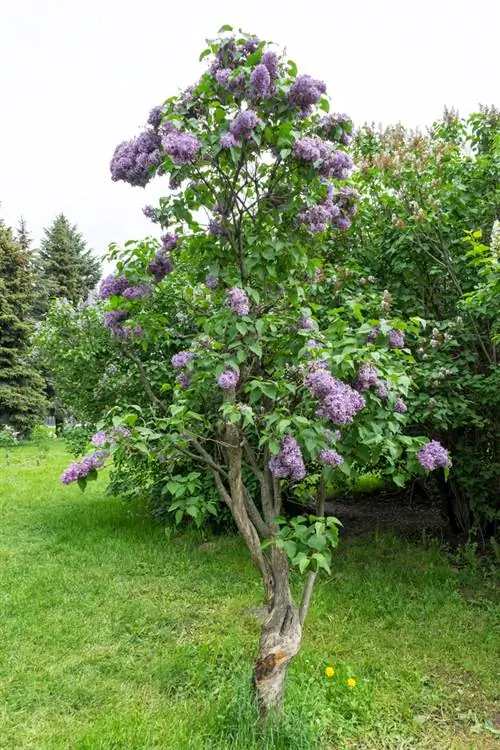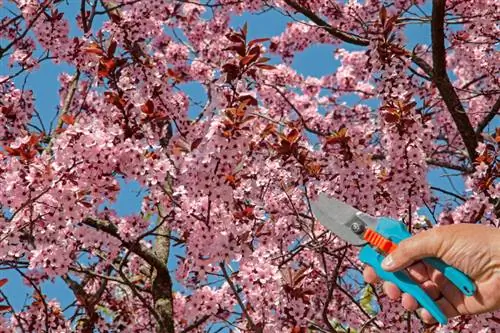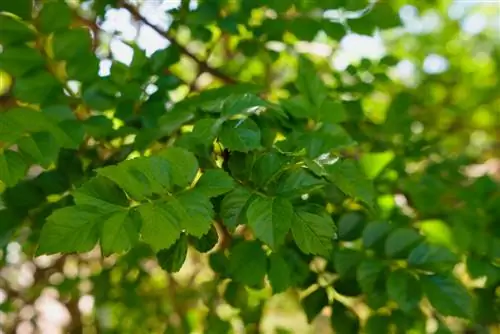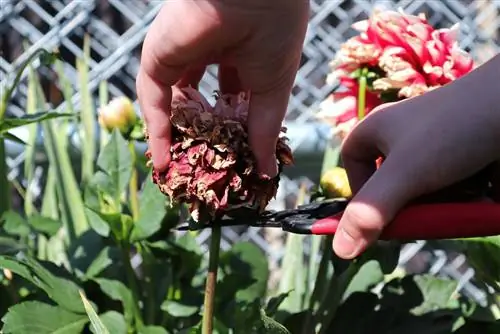- Author admin [email protected].
- Public 2023-12-16 16:46.
- Last modified 2025-01-23 11:21.
The lilac (bot. Syringa vulgaris) naturally grows in the form of a bush and develops several heavily woody trunks with age. The flowering tree keeps sprouting from the roots - a very effective method of propagation, which is why you have to be careful, especially when cultivating a standard tree. You can find out what else needs to be taken into account when cutting a lilac standard tree in this article.
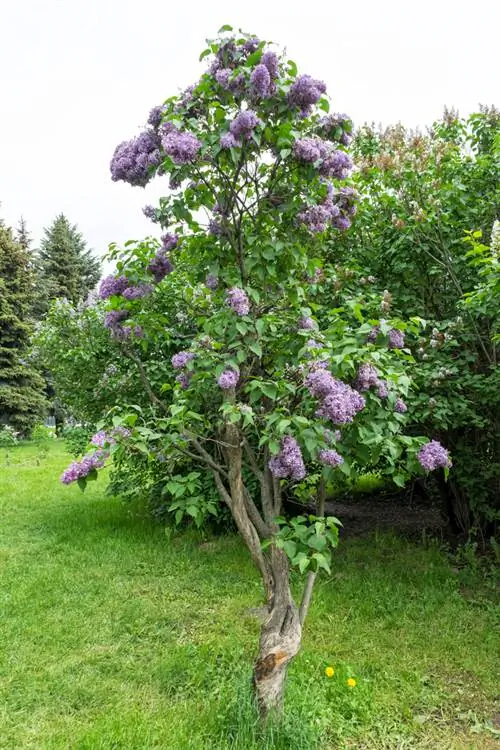
How do I cut a lilac tree correctly?
When cutting a lilac standard tree, wild shoots, crossing, bent, old, dried out and weak shoots should be removed. Cut back the crown immediately after flowering to encourage flower production for the following year.
The best time to cut lilacs
First of all: In contrast to shrub-like specimens, standard lilacs should be cut regularly. Otherwise, you may end up cultivating a shrub in no time because of the numerous root shoots. You should remove these throughout the year as they rob the plant of its strength. It would be better for the lilac to invest this time in developing a dense crown and lush flowers. However, the crown should only be cut back immediately after flowering, because the lilac will immediately produce the following year's flower buds on the new shoot tips. These should therefore not be cut if possible.
Cutting lilac standard stem
The annual care or thinning cut is absolutely necessary, where you
- Cut off wild shoots from the root and trunk directly at the base
- remove crossing shoots at the base of the trunk or branch
- bent or inwardly growing shoots also cut off at the base
- cut away old and dried shoots
- Remove leafless or leafless shoots, especially inside the crown directly on the trunk or branch
- as well as strikingly thin, weak shoots, remove them bluntly.
Furthermore, you should shorten all new shoots by half on young plants planted the previous year. For older lilacs, cut the new shoots back to just a few eyes. This causes increased shoot growth and thus a densification of the crown. This pruning is not necessary every year, but only when there is a risk of baldness and rejuvenation is therefore overdue.
Keep lilac standard small
The shoots of the lilac tend to grow vertically rather than forming a beautifully branched crown. You can counteract this tendency with the right cutting technique. To do this, shorten branches growing upwards by at least a third, while shoots growing outwards are cut back less severely.
Tip
If your lilac doesn't have any branches growing outwards, you can help with a trick: Tie a stone or something similar to the end of a suitable branch, which will bend the shoot downwards. After a while it will follow this forced growth direction on its own.

